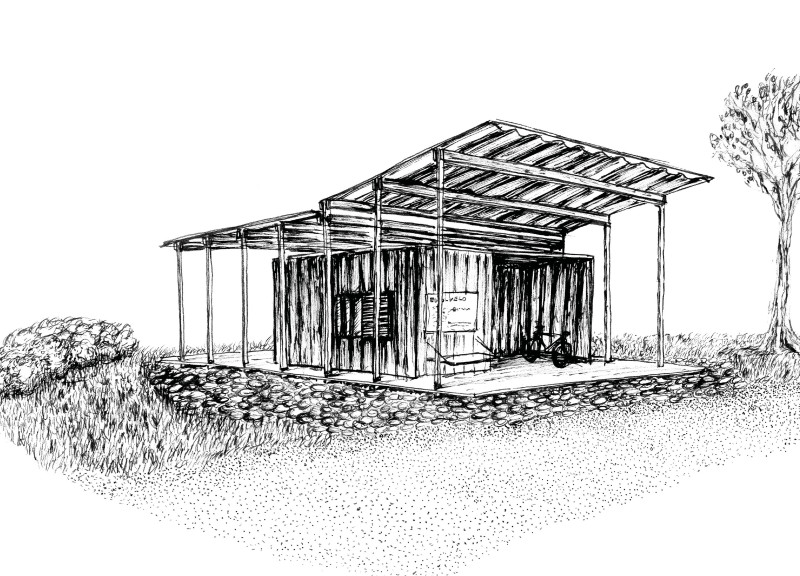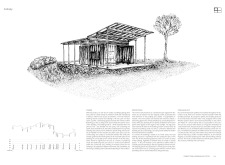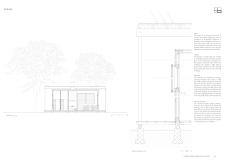5 key facts about this project
Design Intent and Unique Approach
A primary focus of the design is the integration of indoor and outdoor spaces. The structure comprises two buildings: one designated for communal activities, such as dining and social engagement, and the other catering to private needs with sleeping quarters. This duality serves the project’s intent to foster a sense of community while providing personal retreats.
Distinctively, the roof design plays a critical role in both aesthetics and function. Its angled profile is not only visually appealing but also practical, facilitating rainwater runoff and creating shaded areas for outdoor activities. This design approach showcases an understanding of environmental factors while enhancing user comfort.
Sustainable practices are further embedded in the project through the use of renewable energy elements such as solar panels and rainwater collection systems. These features contribute to the building's overall sustainability and demonstrate a commitment to reducing its environmental footprint.
Materiality and Functionality
The selection of materials is integral to the architecture of Canopy. Plywood is extensively utilized for its lightweight properties and insulation efficacy. This choice supports the overall goal of minimizing environmental impact while providing warmth and structural reliability. The incorporation of metal sheets for roofing further ensures durability, while glass windows enhance transparency and connectivity with the outside.
The project’s adaptability is reflected in its design elements, such as movable window shutters that allow for control over natural light and privacy. These features underscore the design philosophy of responsiveness to user needs, further emphasizing the importance of flexibility in contemporary architecture.
For those interested in exploring the technical aspects of this project, a closer examination of the architectural plans, sections, and details will provide a comprehensive understanding of the design's intricacies and execution. Reviewing these elements will offer deeper insights into how the project effectively responds to both functional and environmental considerations.


























